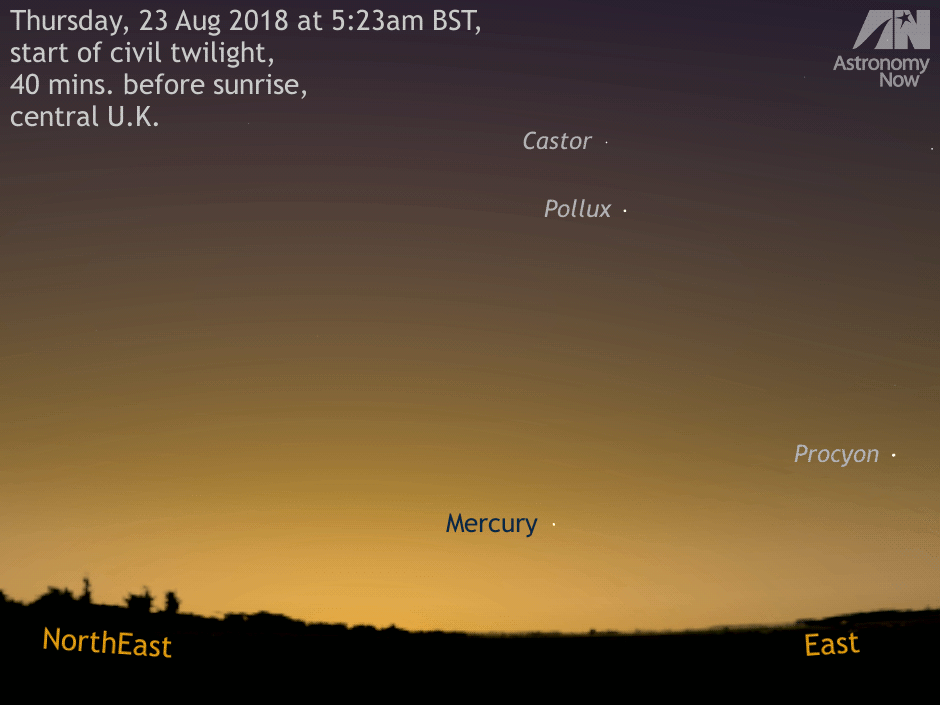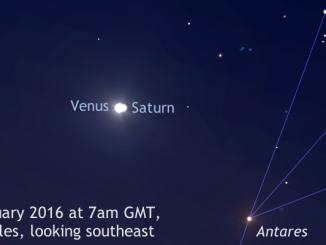
If you wish to add Mercury to your tally then you’ll need to be something of an early riser over the next 2½ weeks or so. Find a viewing location that offers an unobstructed view from northeast through east around 40 minutes before your sunrise (hint: our interactive online Almanac provides this information) when you stand your best chance of catching a glimpse of the innermost planet with the unaided eye or binoculars some 8 degrees (or slightly less than the span of your fist at arm’s length) above a level horizon in the growing twilight. One word of caution: never use binoculars or telescopes to search near the horizon if sunrise is imminent — it’s not worth risking your eyesight.
Mercury attains a westerly elongation of 18 degrees from the Sun on 26 August. The planet is magnitude zero on this date and grows steadily brighter over subsequent mornings, moving from the constellation of Cancer into Leo on 29 August. Mercury is at its highest in the east-northeast at the beginning of civil twilight from 27-31 August. By 3 September, Mercury is shining at magnitude -1.
At civil dawn in the UK on Thursday, 6 September (about 5:50am BST), Mercury passes just 1 degree – or twice the apparent width of the full Moon – north of Regulus, the brightest star in the constellation of Leo. The slim waning crescent of a 27-day-old Moon lies to the upper right of Regulus and Mercury on the UK morning of Saturday, 8 September.



